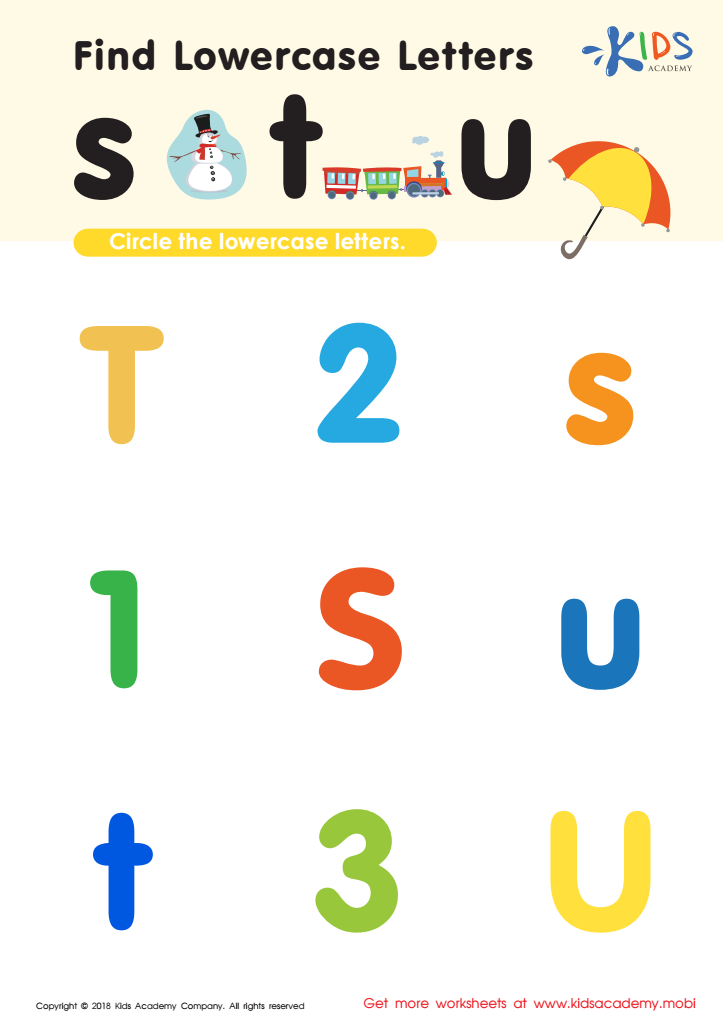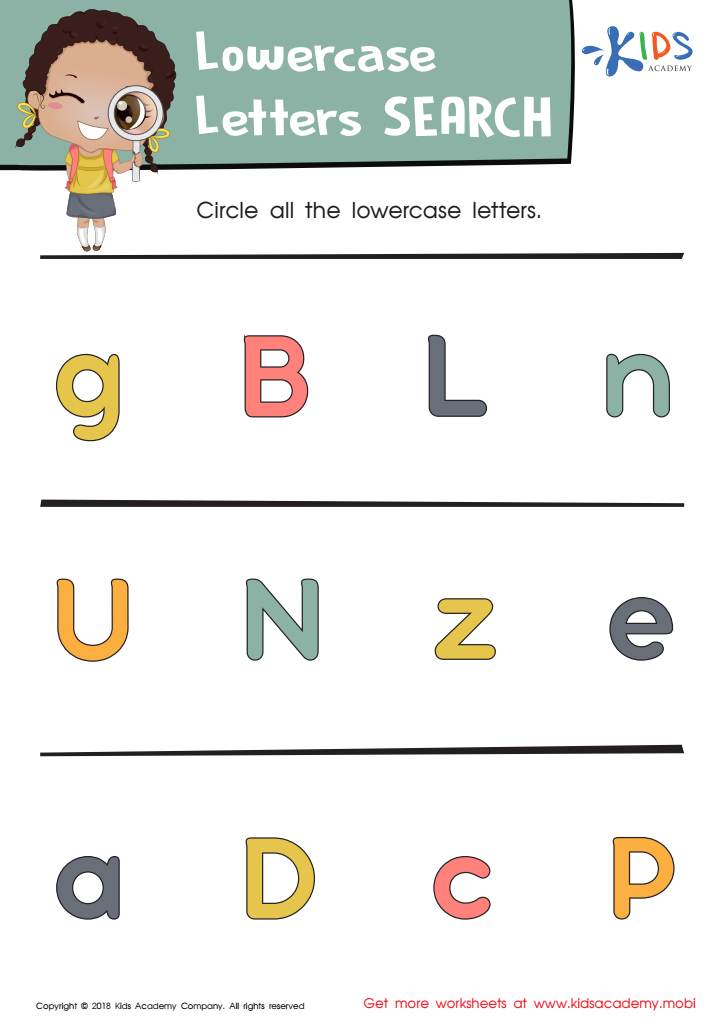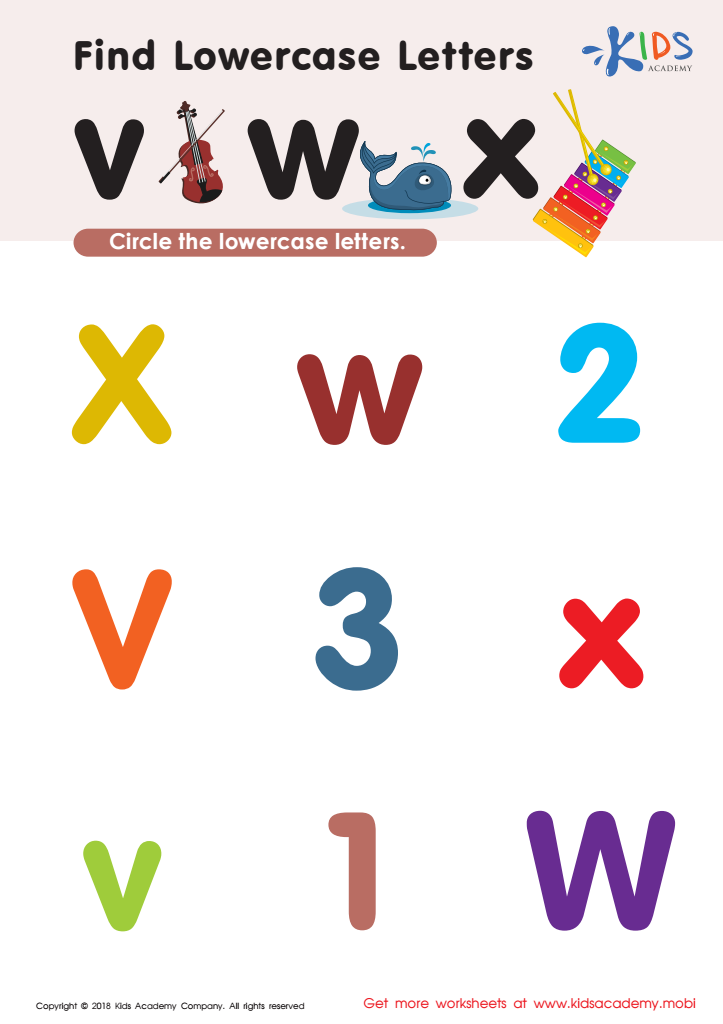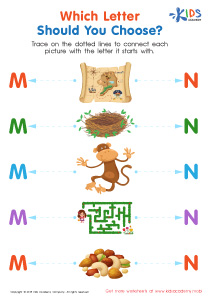Alphabet familiarity Lowercase/Small Letters Worksheets for Ages 6-9
3 filtered results
-
From - To
Enhance your child's alphabet mastery with our Lowercase/Small Letters Worksheets, specially designed for kids aged 6-9. Our engaging and educational activities cover everything from alphabet recognition to writing practice, ensuring a solid foundation in lowercase letter usage. With vibrant visuals and enjoyable exercises, our worksheets encourage independent learning and boost confidence in young readers and writers. Ideal for educators and parents, these resources will make learning both fun and effective. Accessible anytime, these worksheets are an excellent tool to nurture your child's love for reading and writing. Start their journey towards alphabet proficiency today!
Discover more at Kids Academy!


Find lowercase Letters s t u Worksheet


Lowercase Letters Search: Assessment Worksheet


Find Lowercase Letters v w x Worksheet
Understanding alphabet familiarity, particularly with lowercase letters, is crucial for children aged 6-9 as it lays the foundation for reading and writing skills. Lowercase letters dominate English texts, appearing more frequently than uppercase letters in books, articles, and other written materials children engage with daily. As children become proficient in recognizing and writing these letters, their fluency in reading improves, allowing them to move swiftly from letter recognition to word recognition and, subsequently, comprehension.
When children know their lowercase letters well, it enhances their ability to decode new words, which is fundamental for developing both reading and spelling skills. This proficiency fosters a positive reading experience, encouraging curiosity and a love for learning. Inaccurate or slow letter recognition can lead to frustration and disinterest in reading, negatively impacting a child's educational trajectory and confidence.
Moreover, early familiarity with lowercase letters forms the basis for handwriting skills, essential for classroom tasks and effective communication. Correct letter formation prevents bad habits and supports neat, legible handwriting, which teachers and peers can easily understand. Encouraging alphabet familiarity serves not only cognitive development but also contributes to a child's overall sense of achievement and motivation in their academic journey.
 Assign to My Students
Assign to My Students















